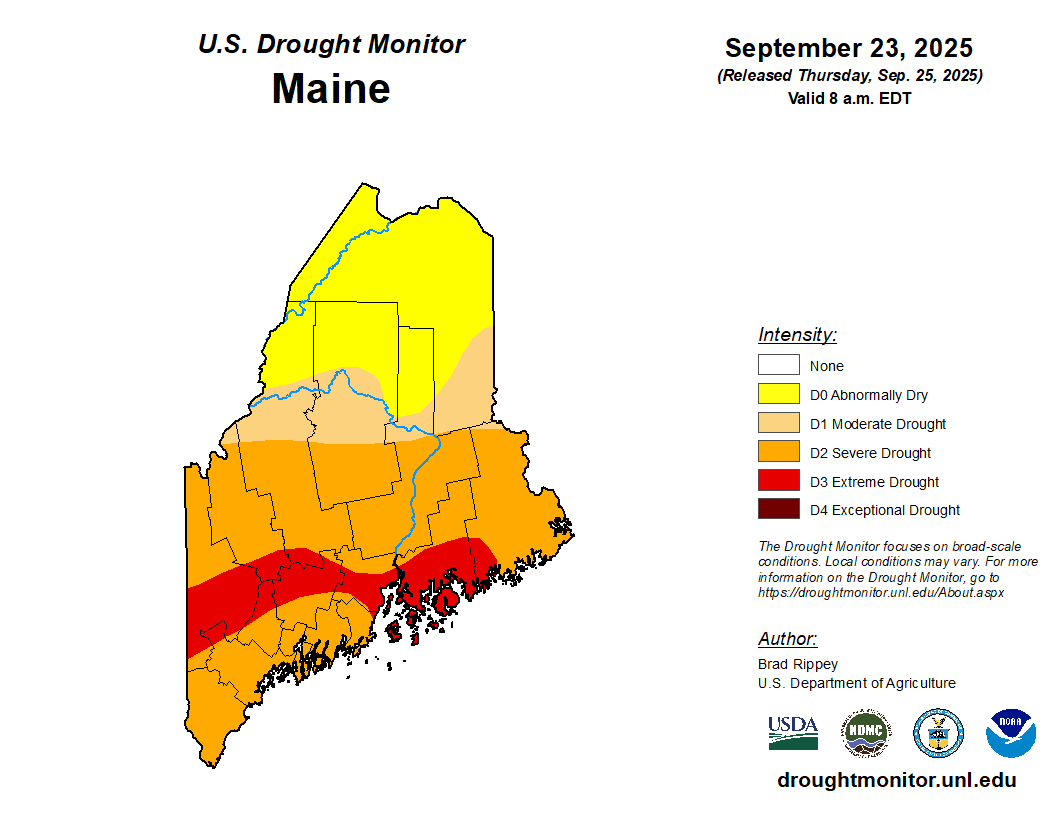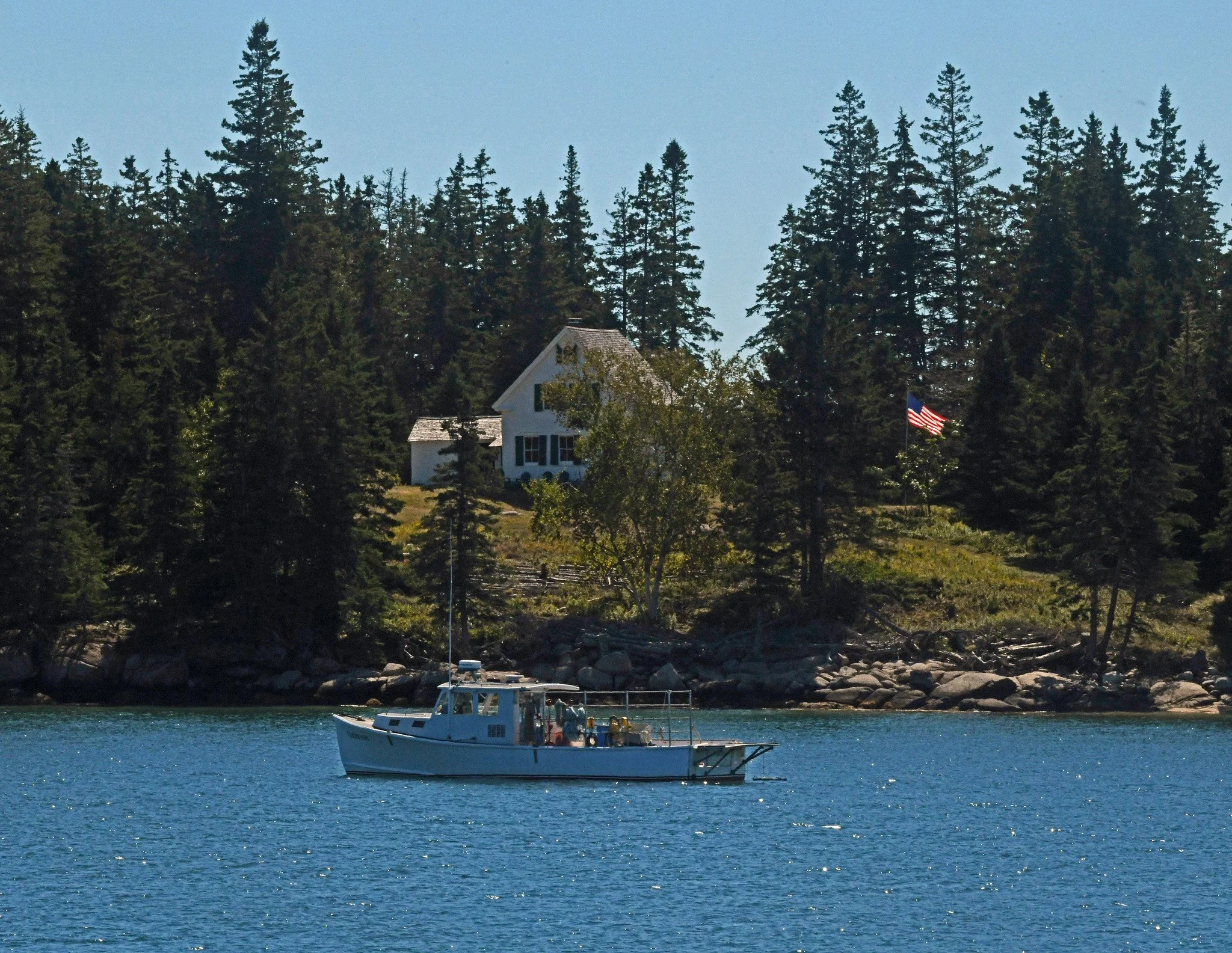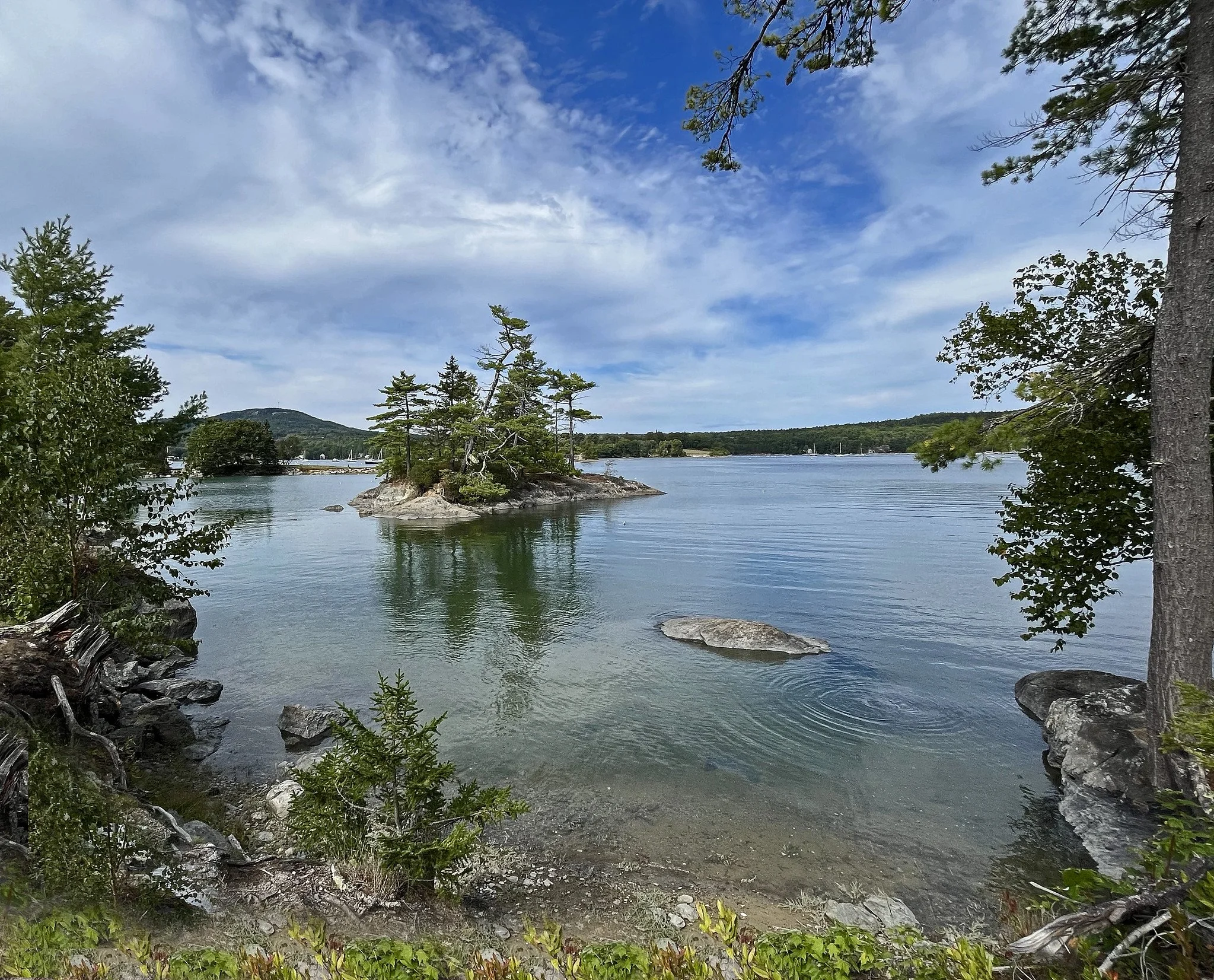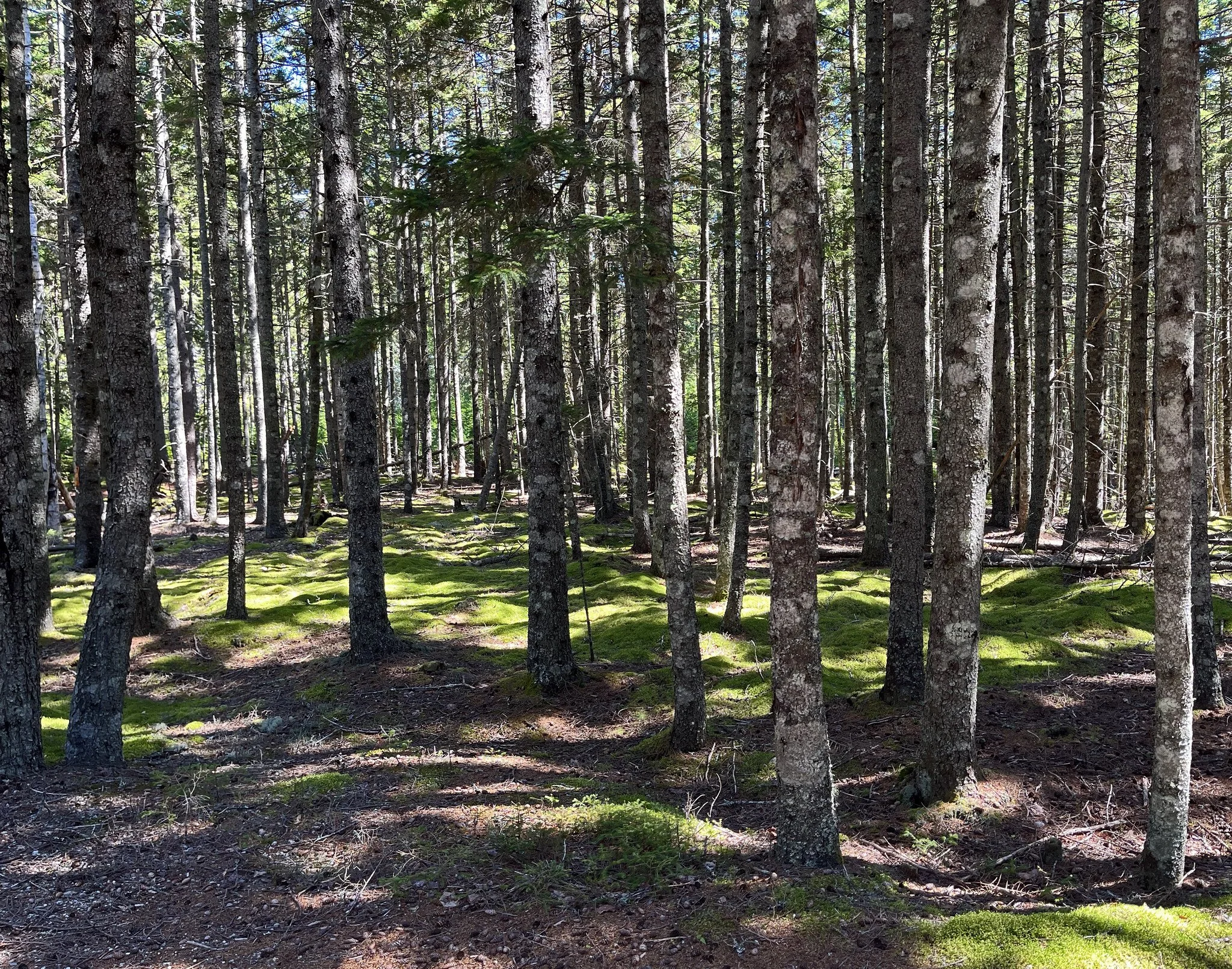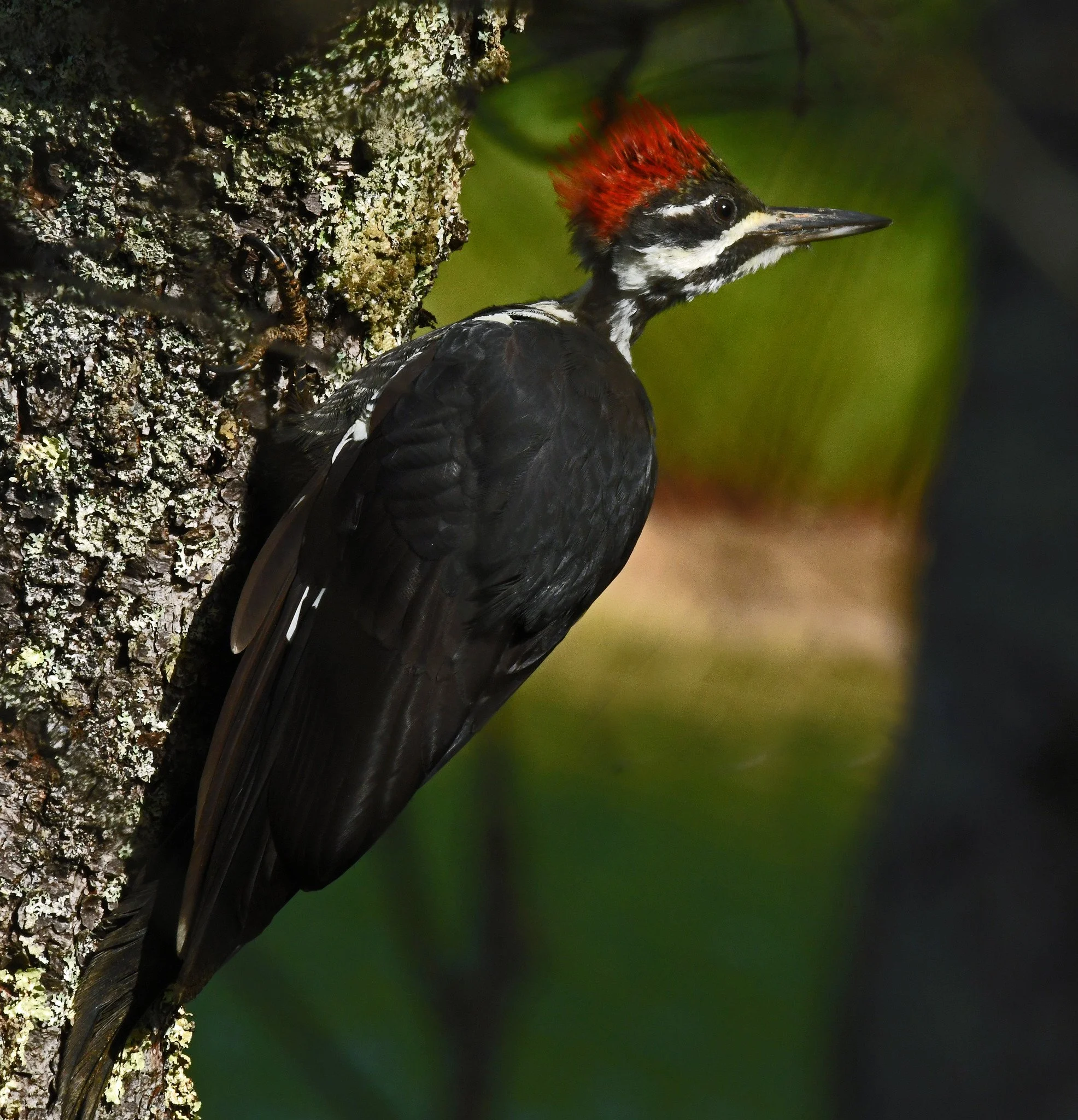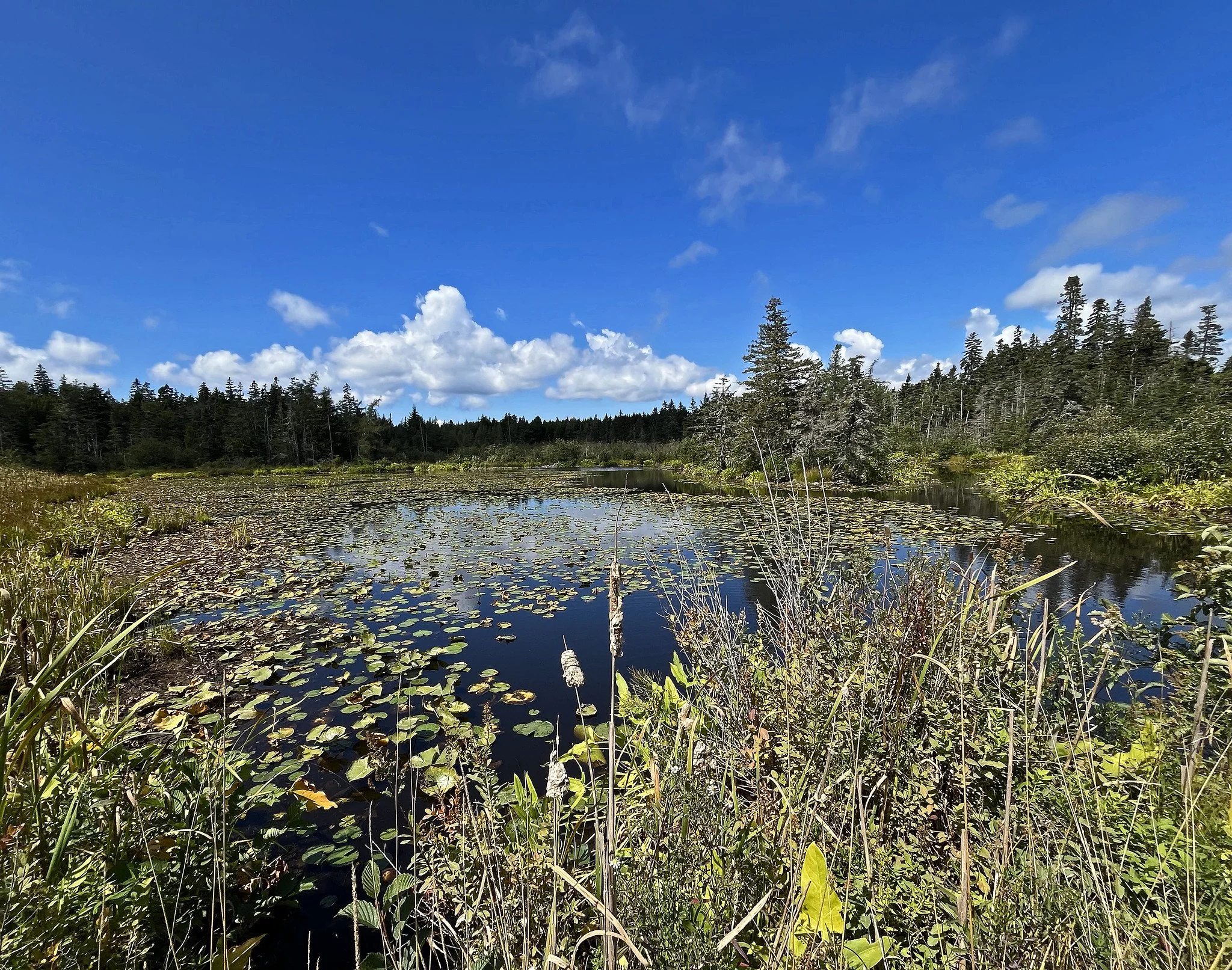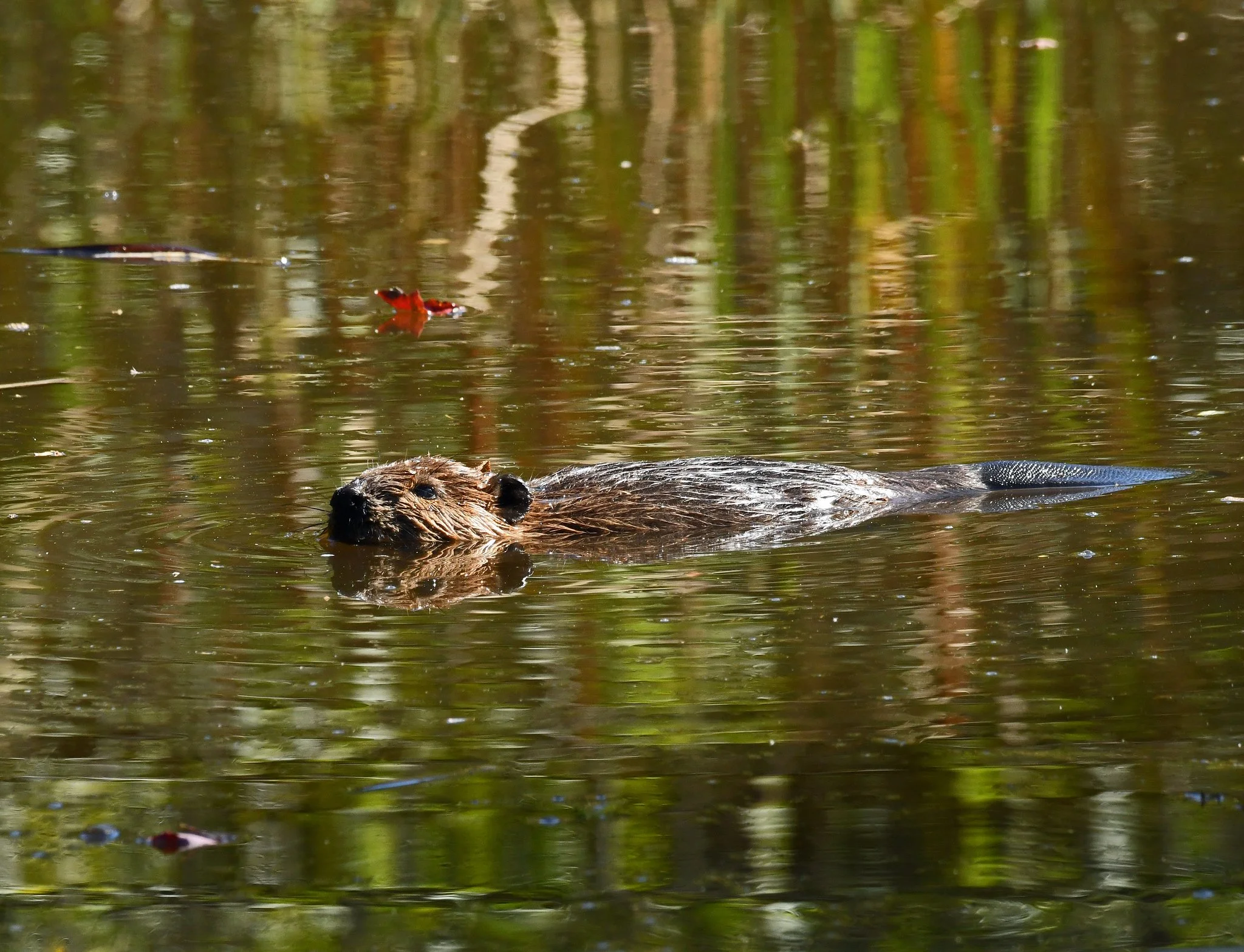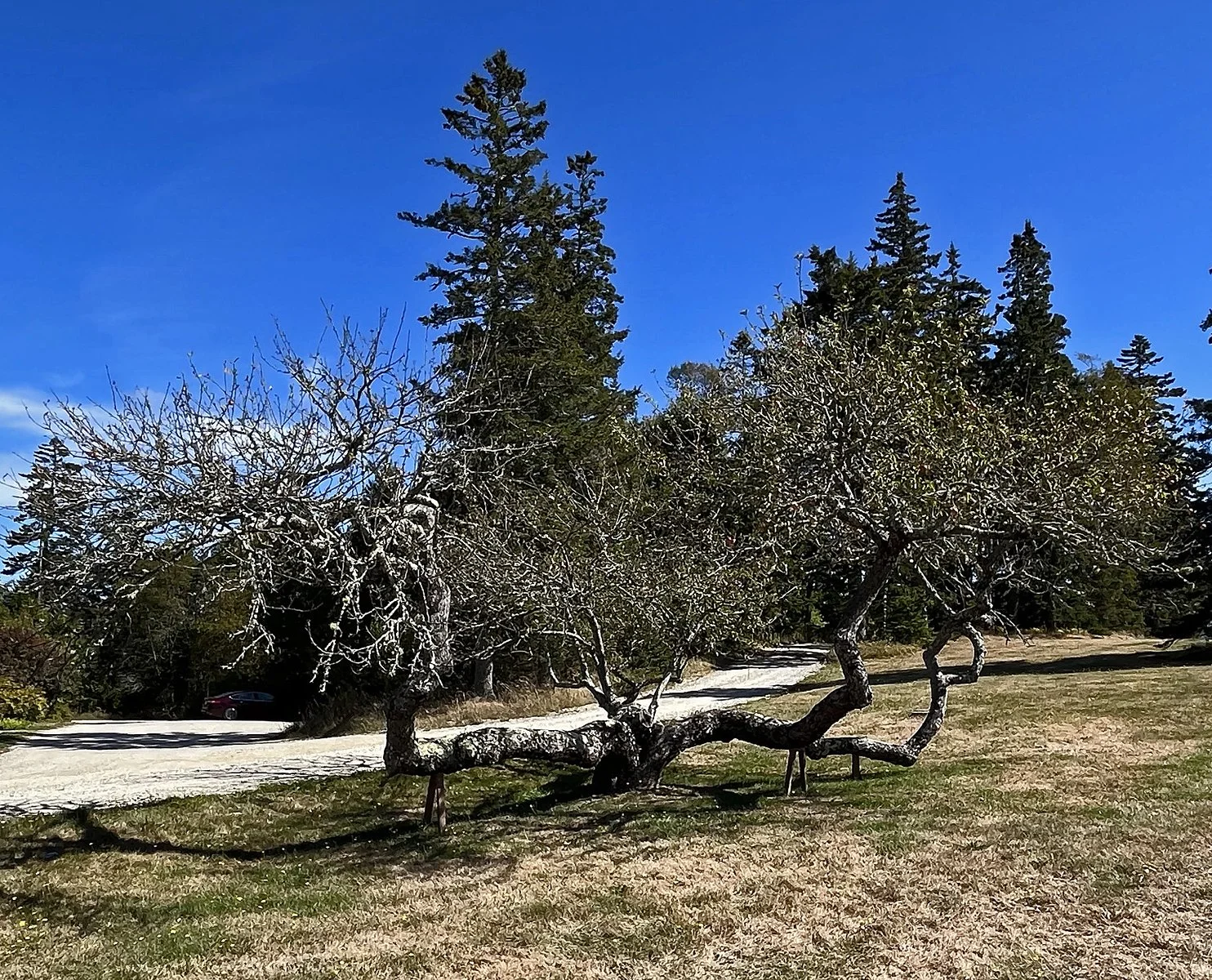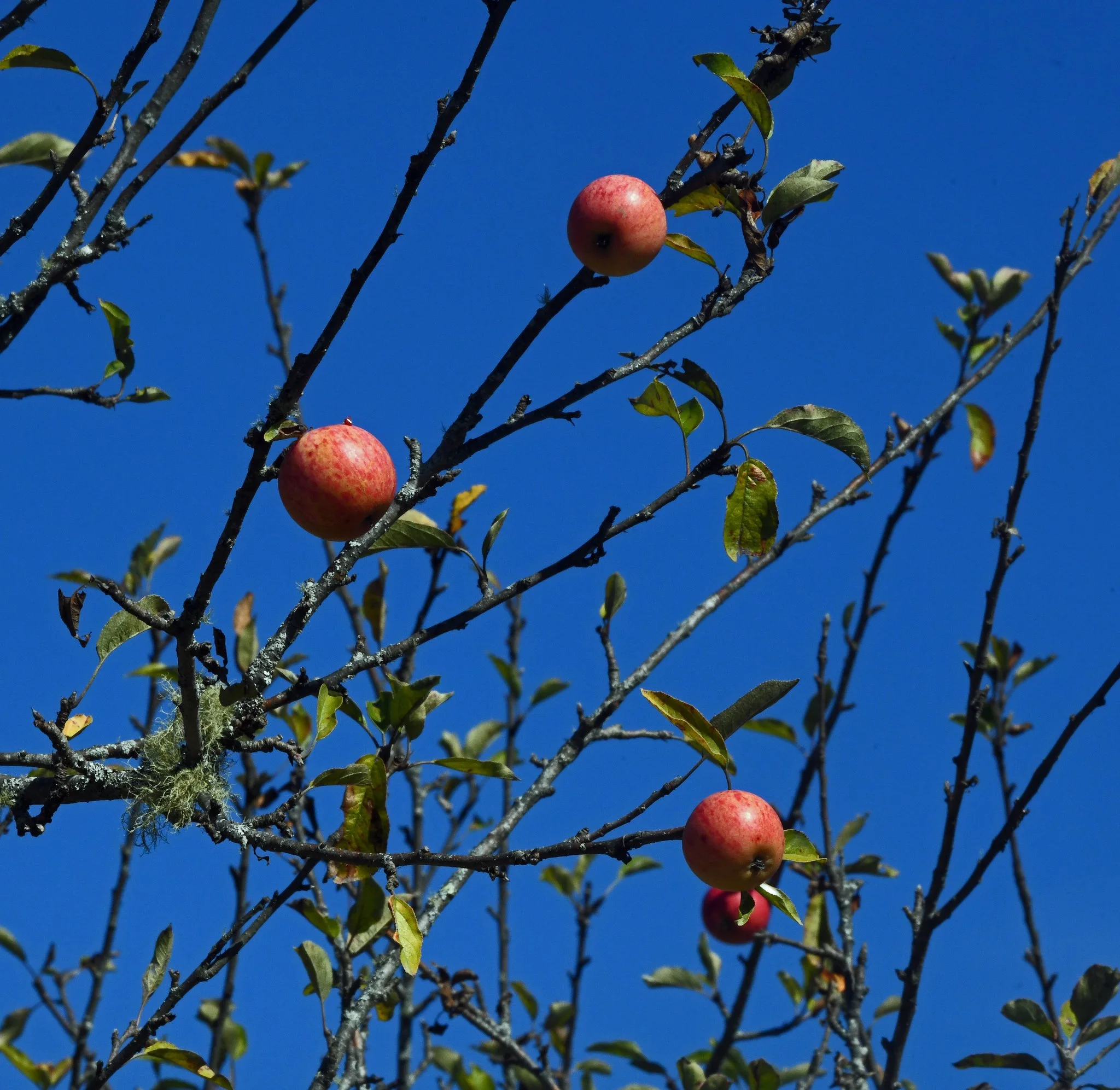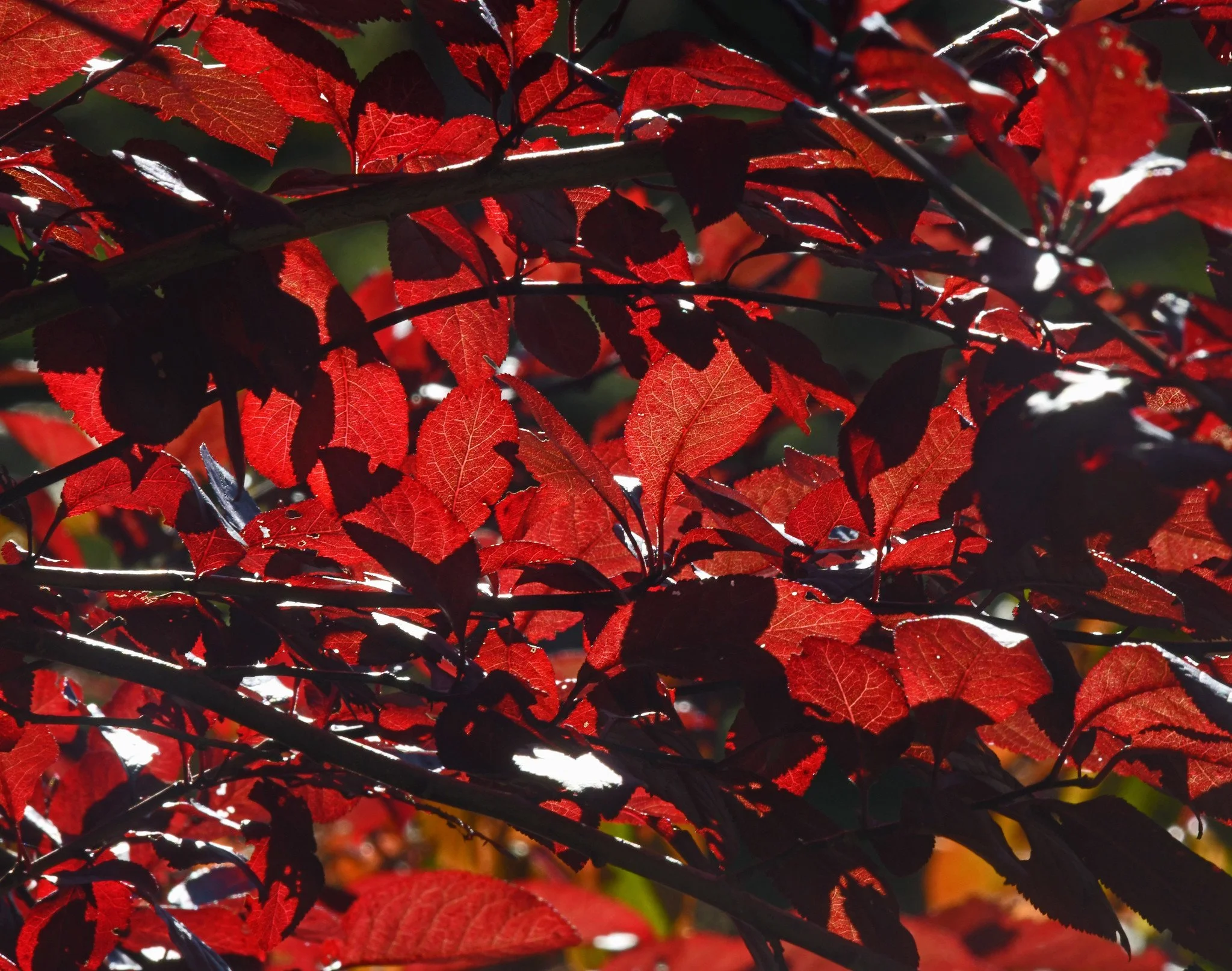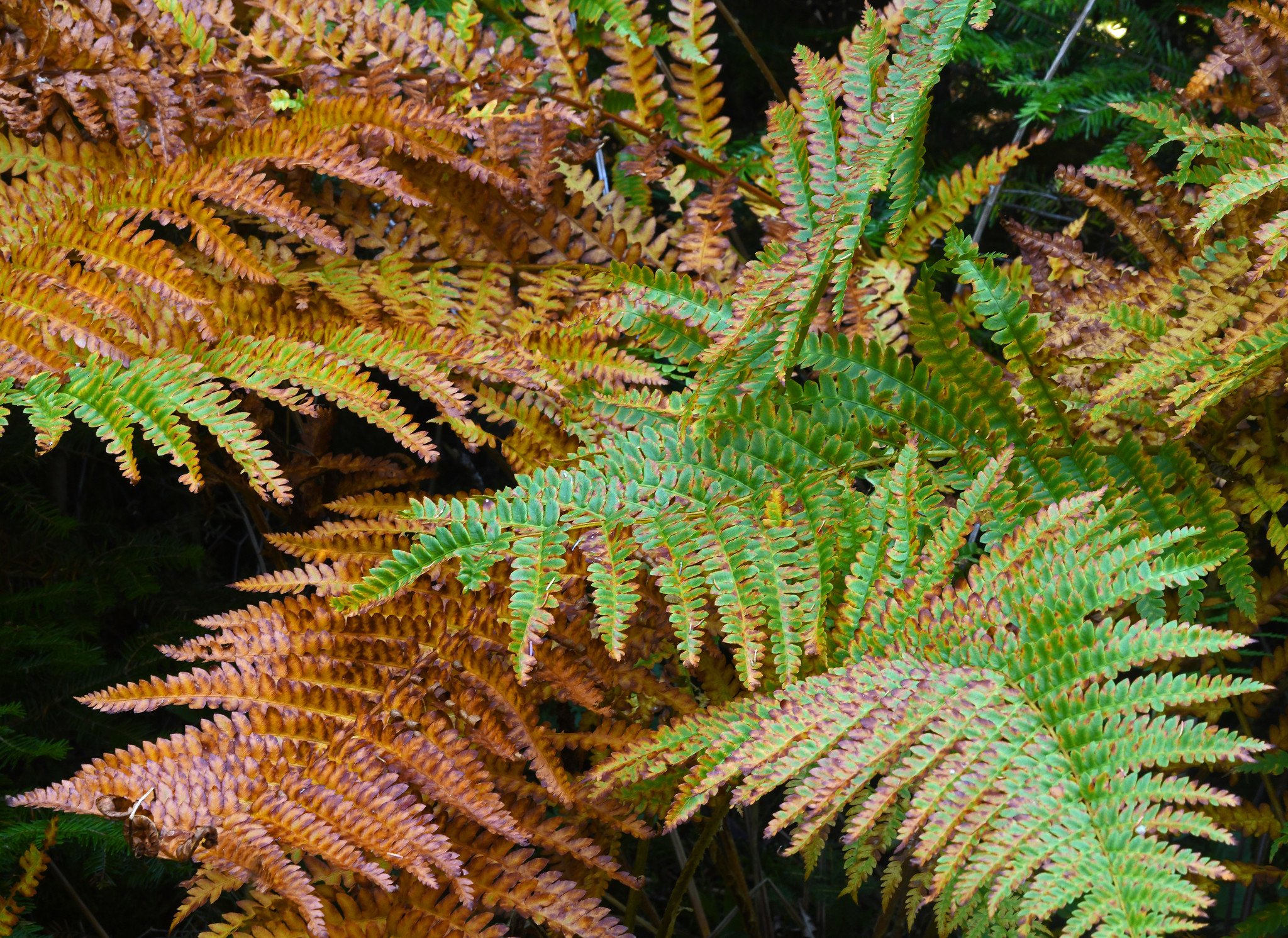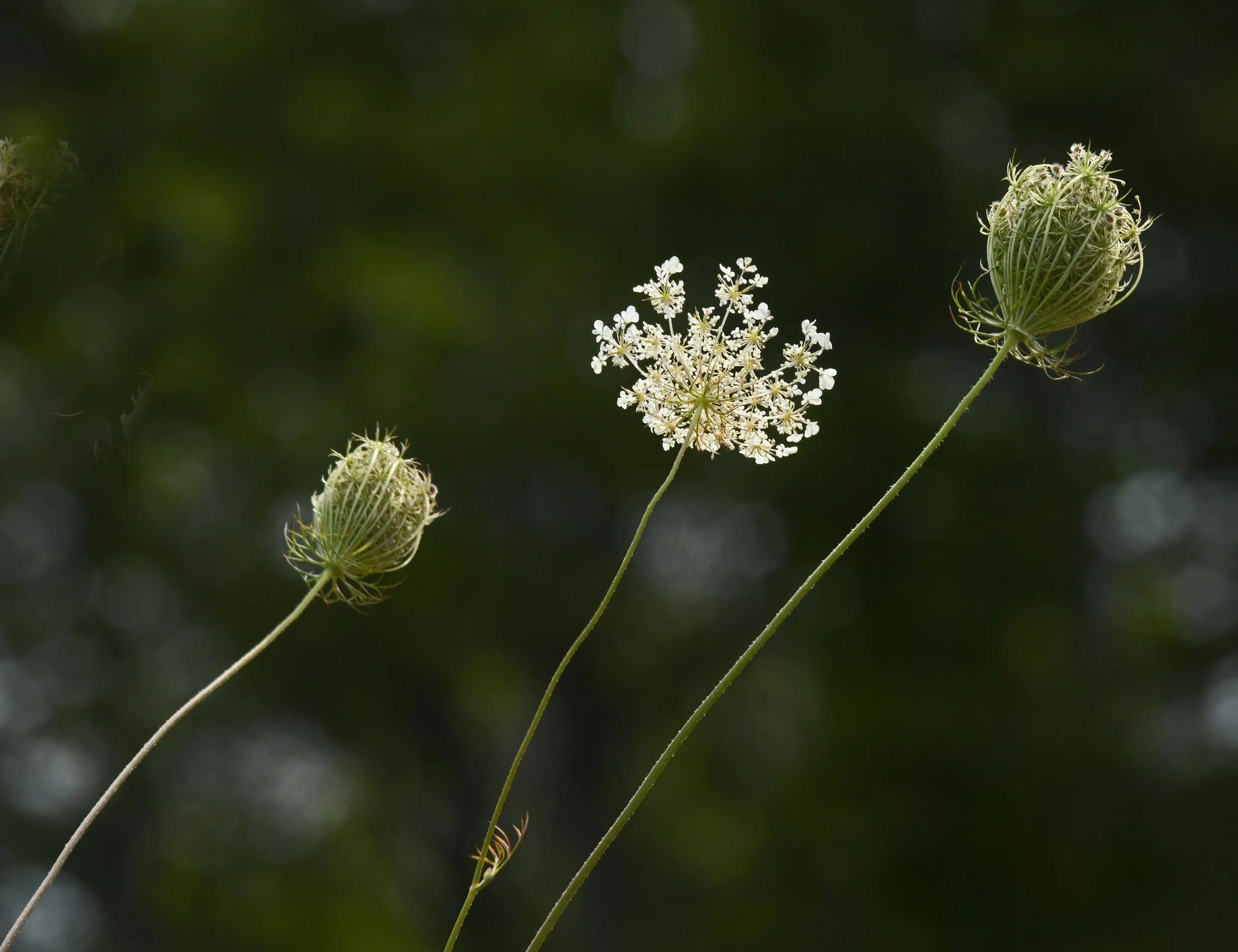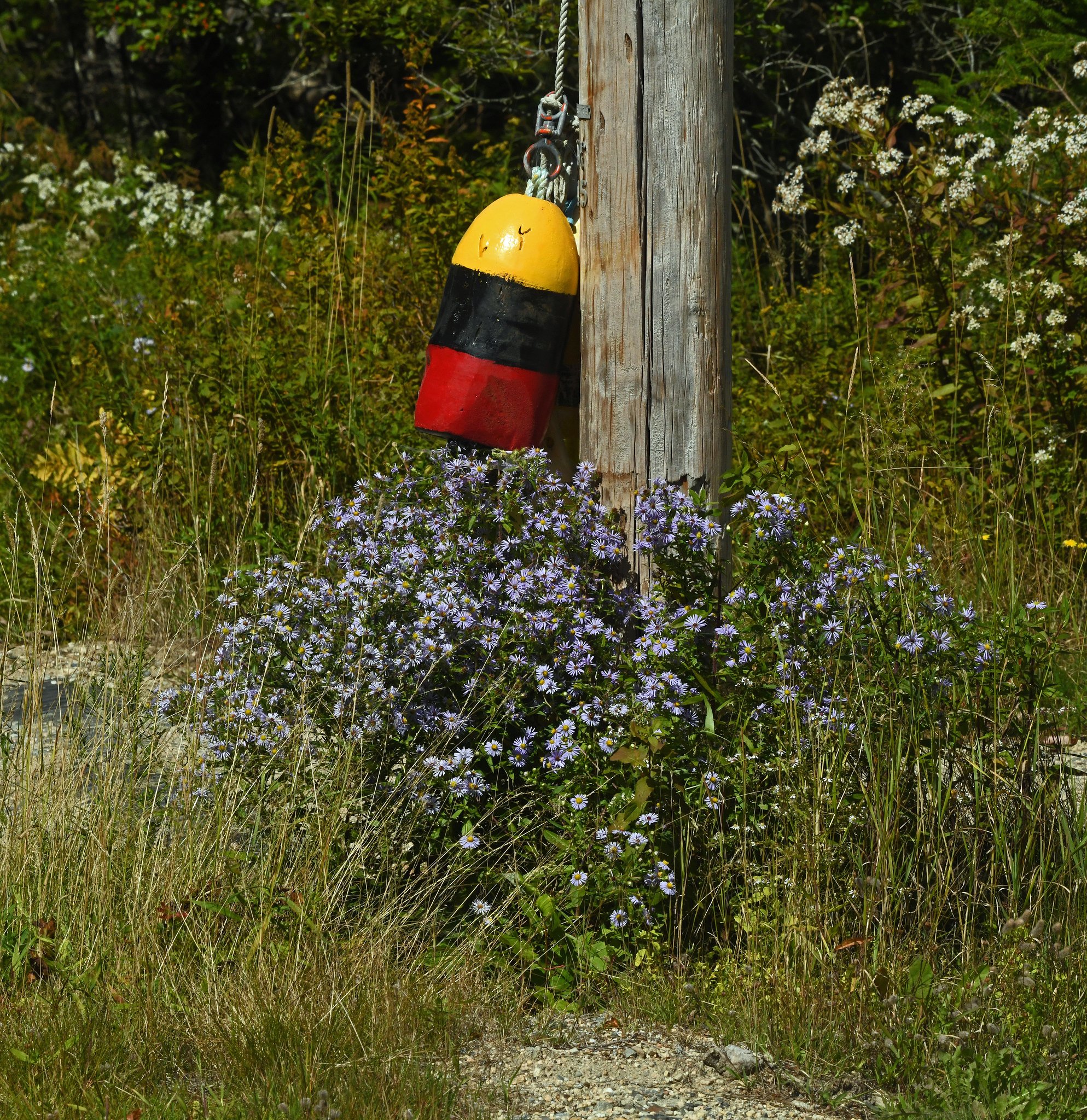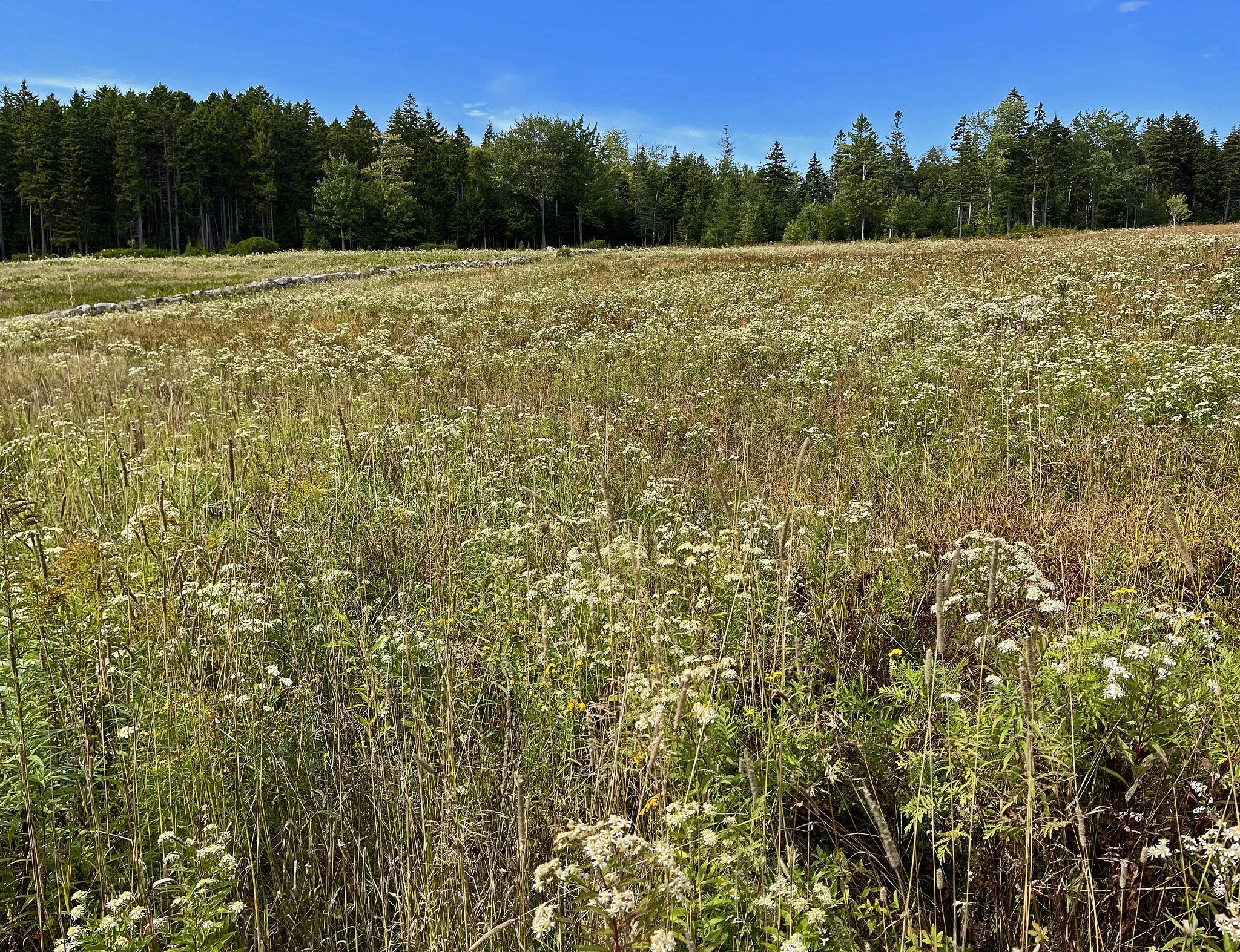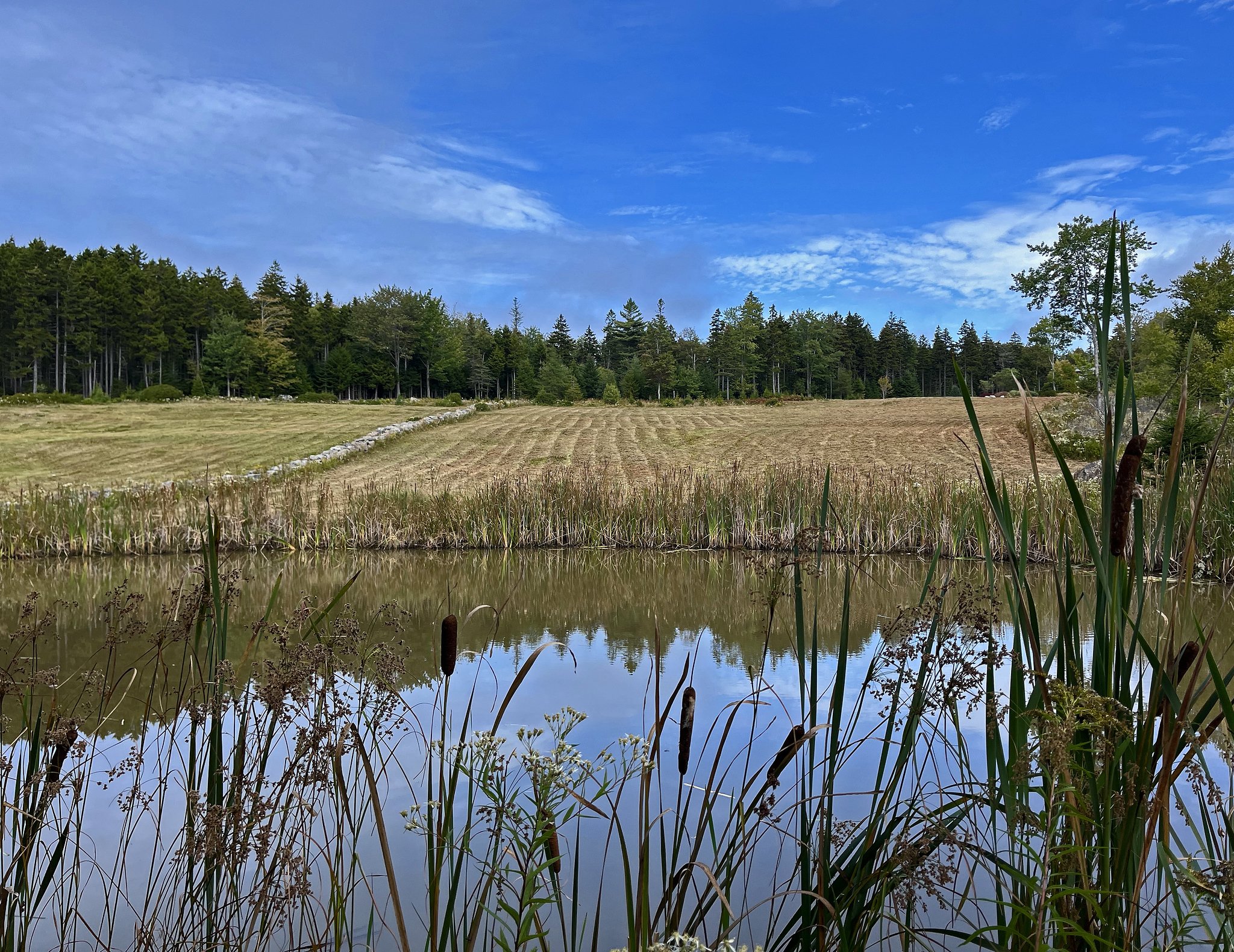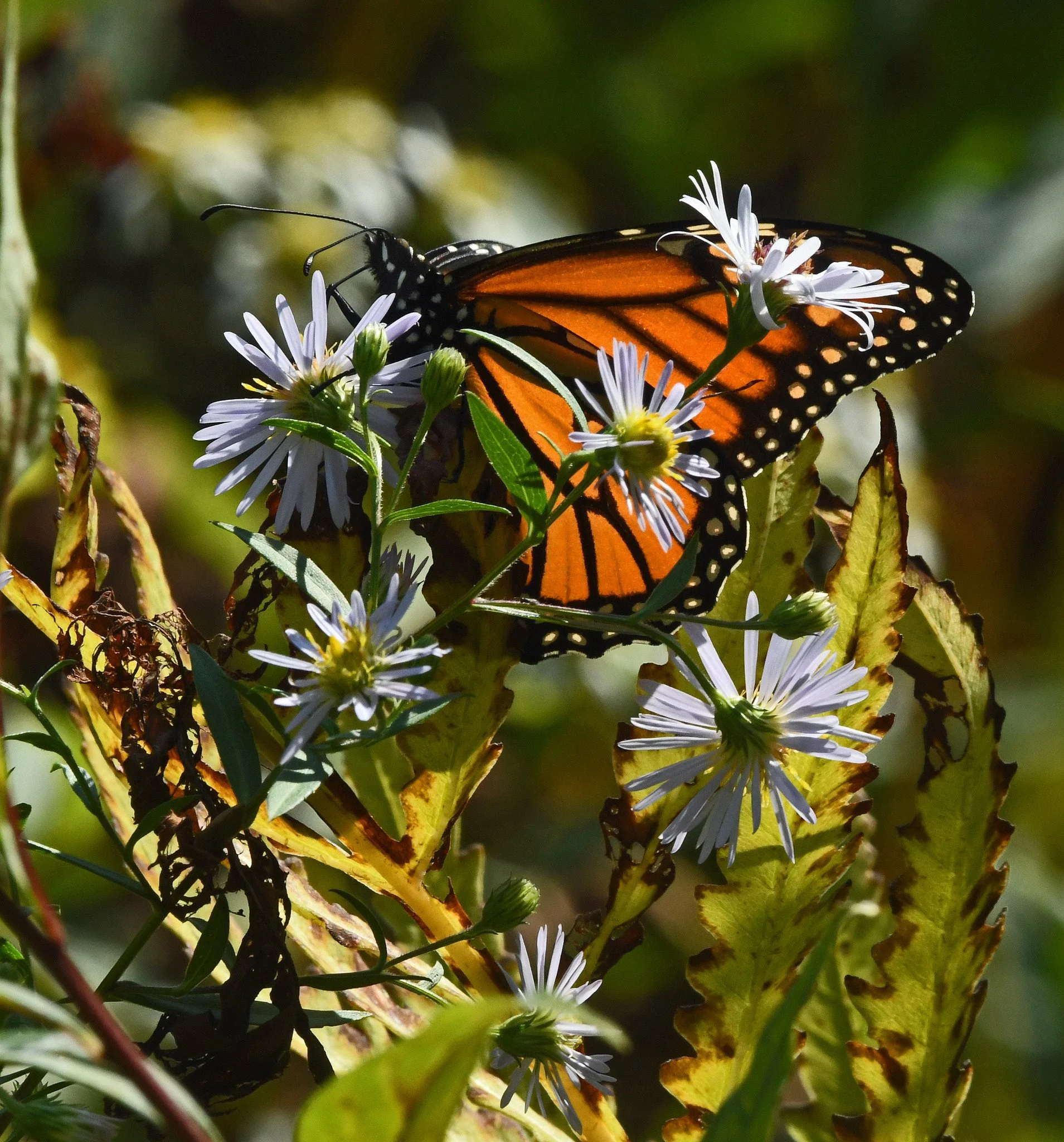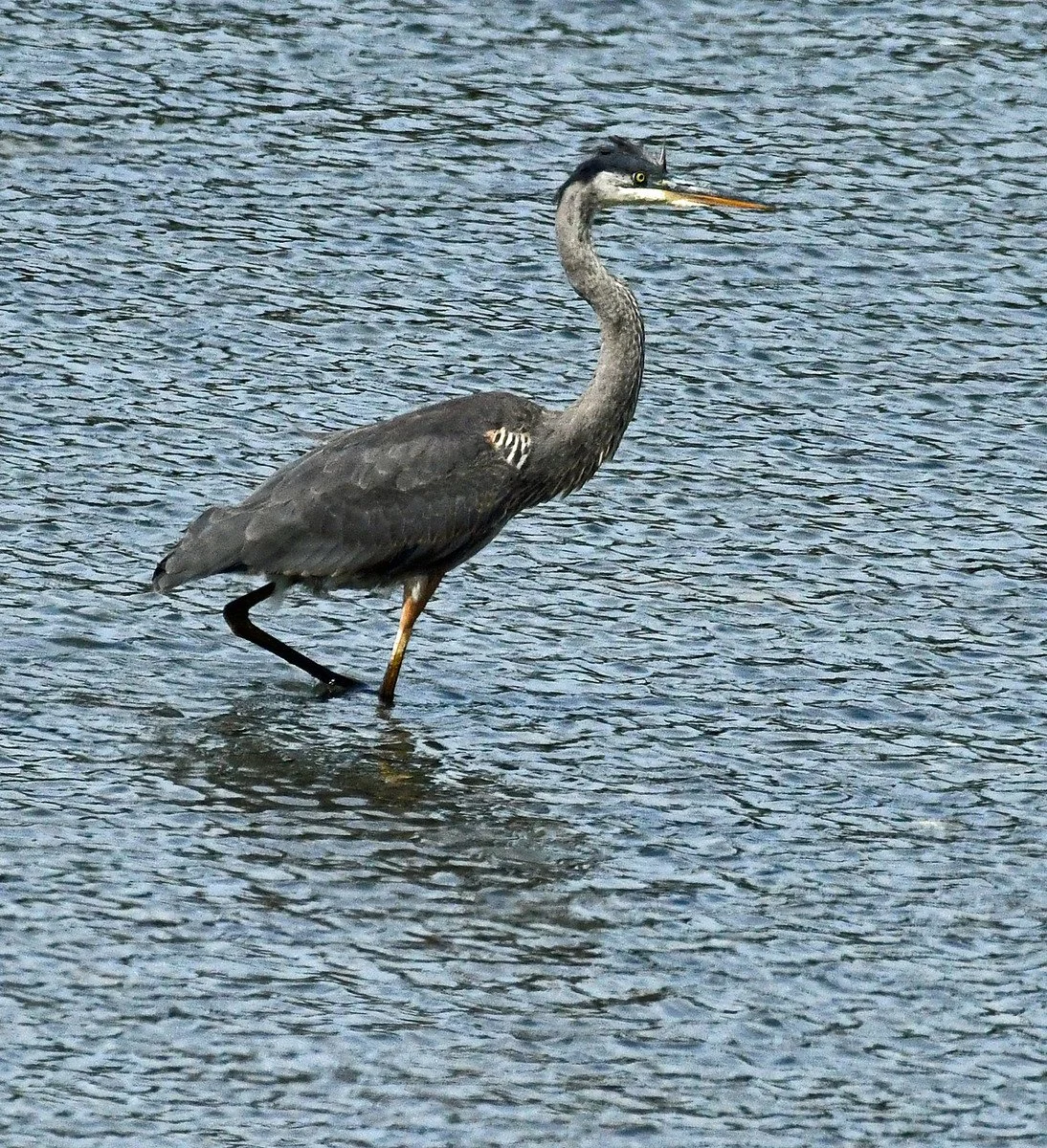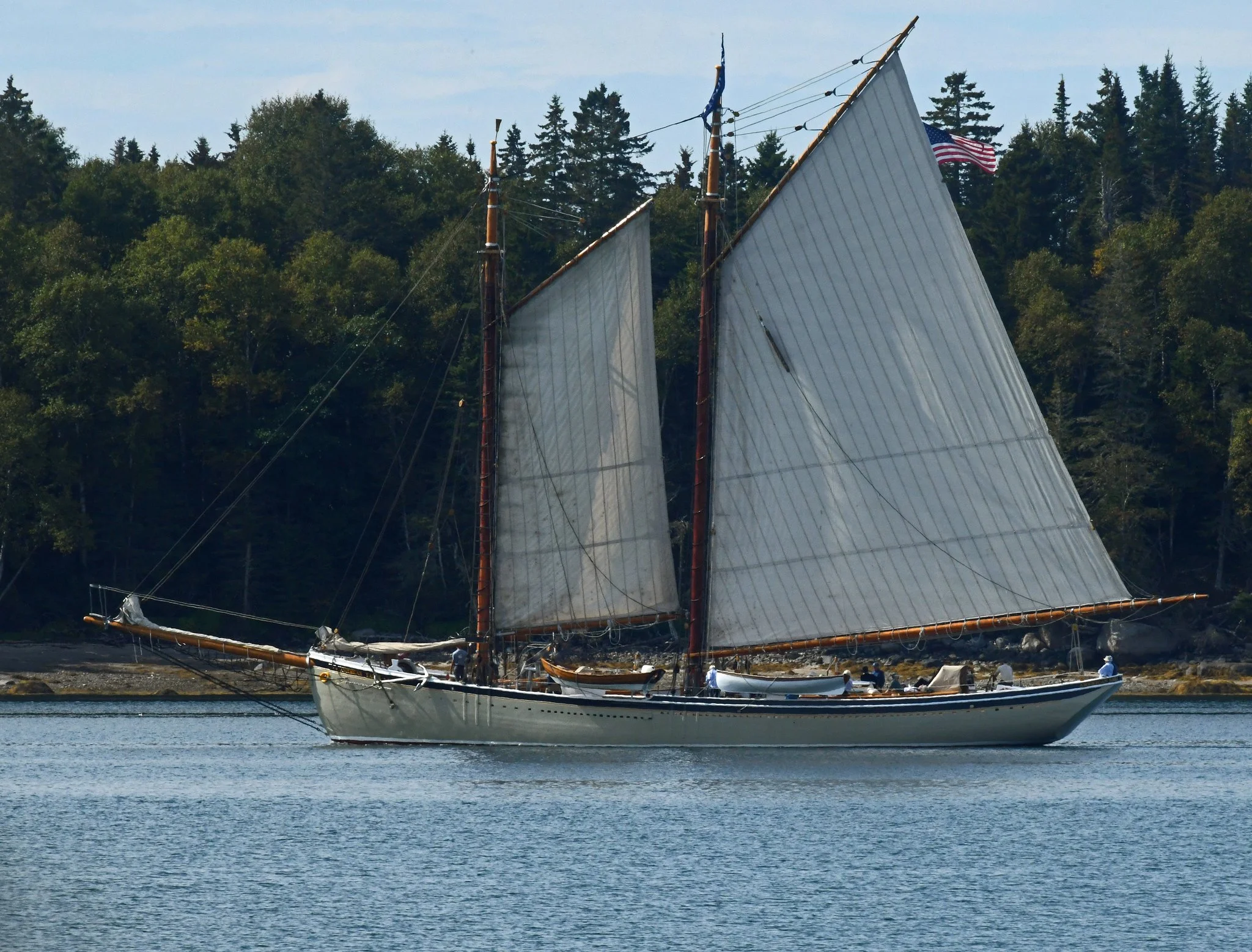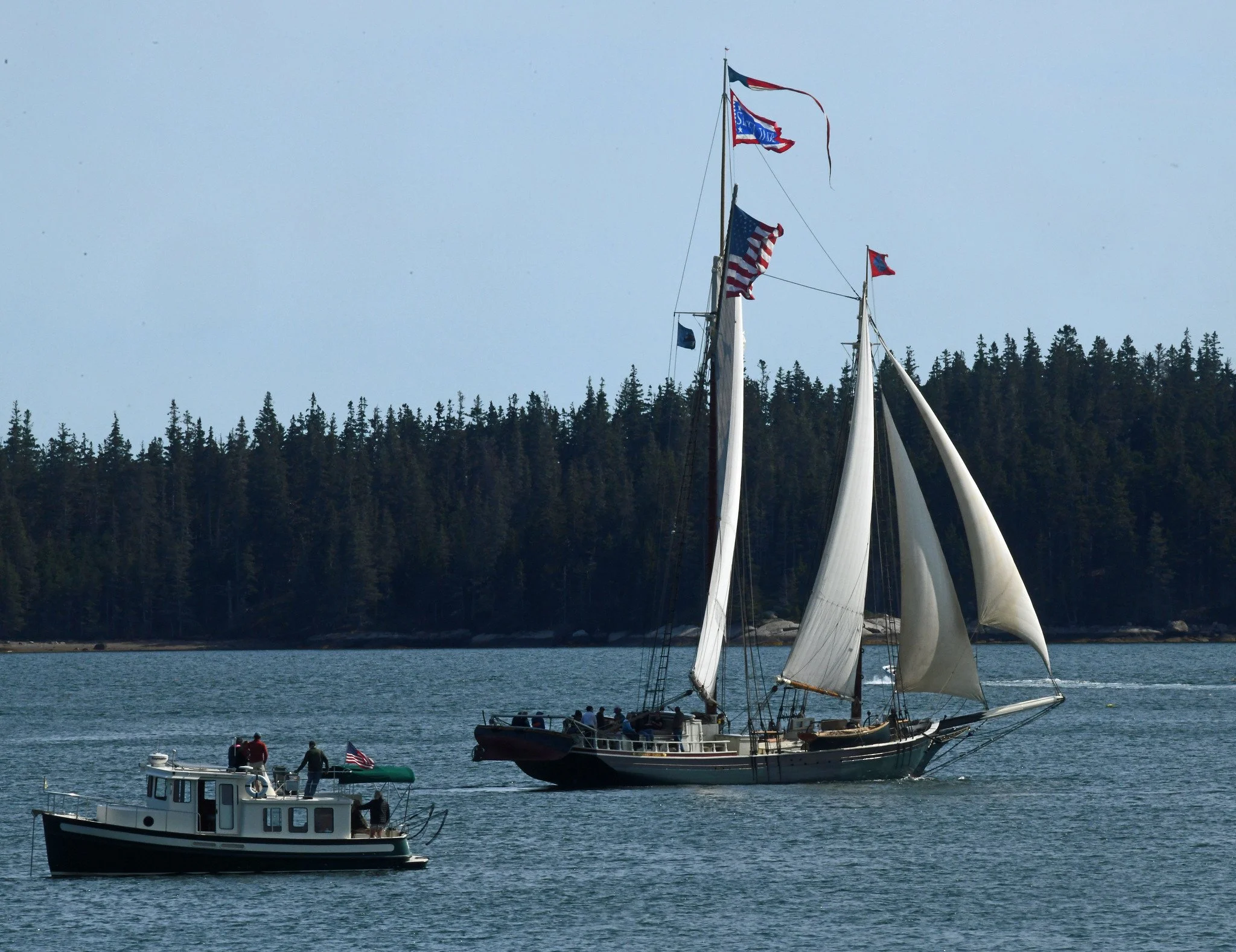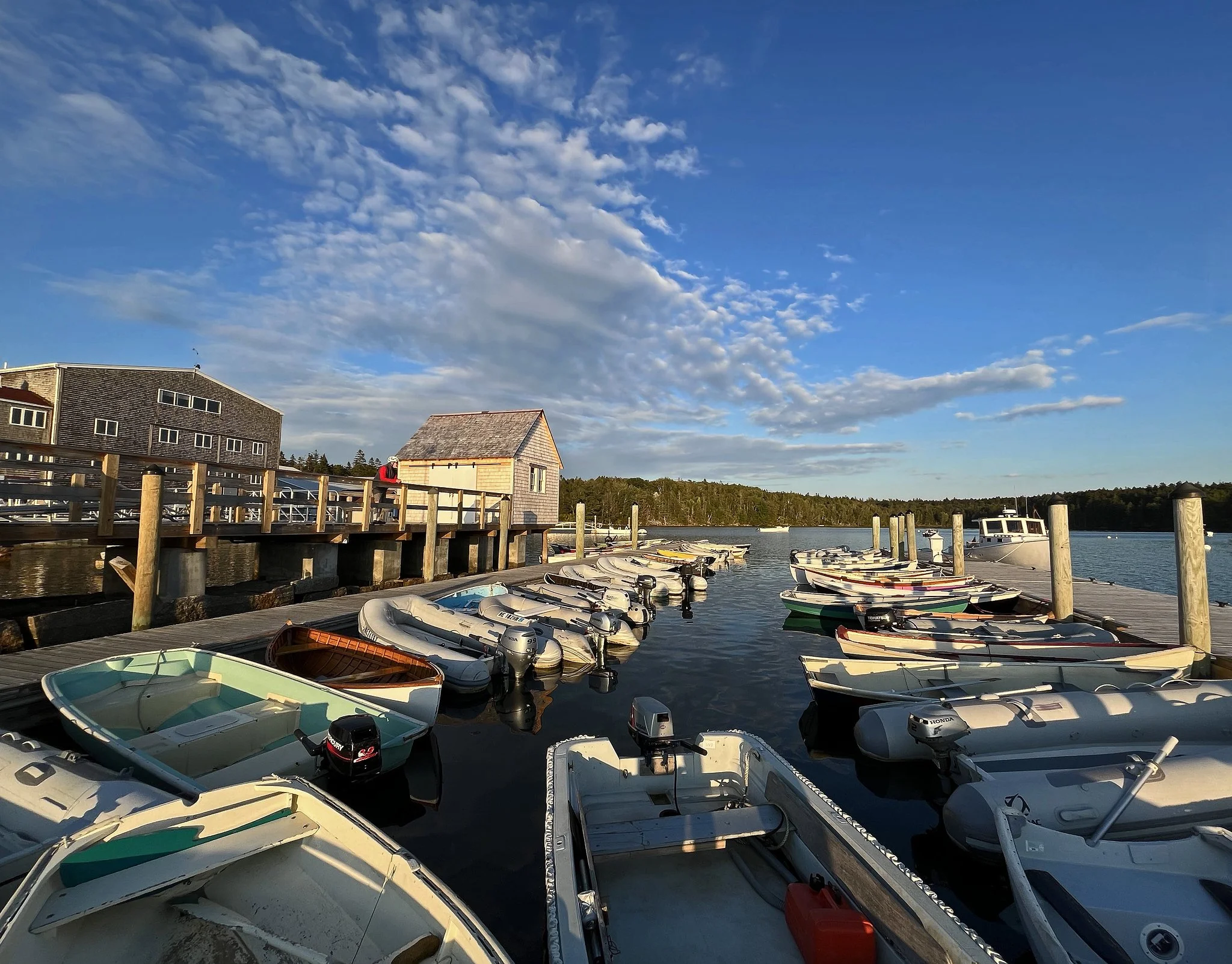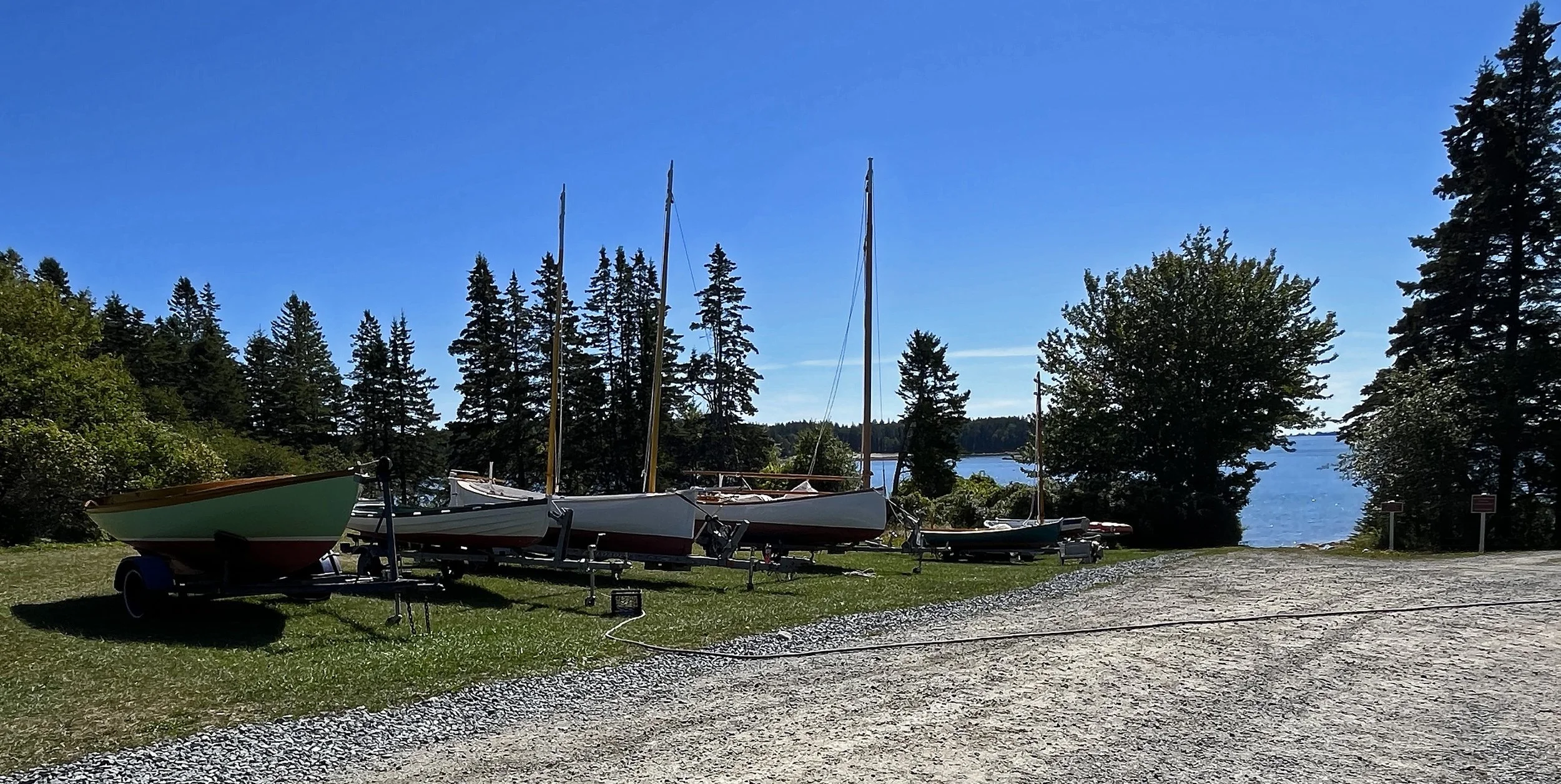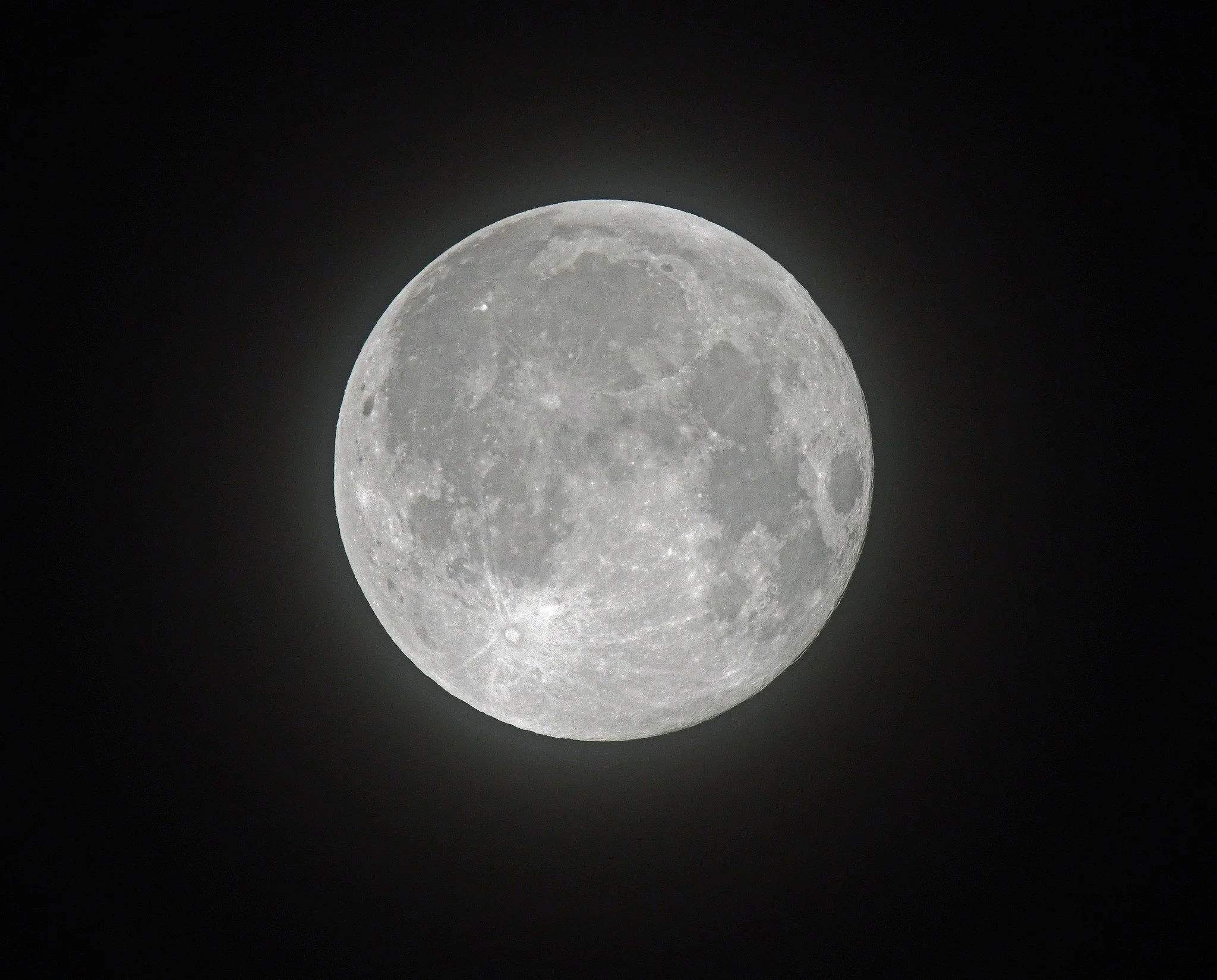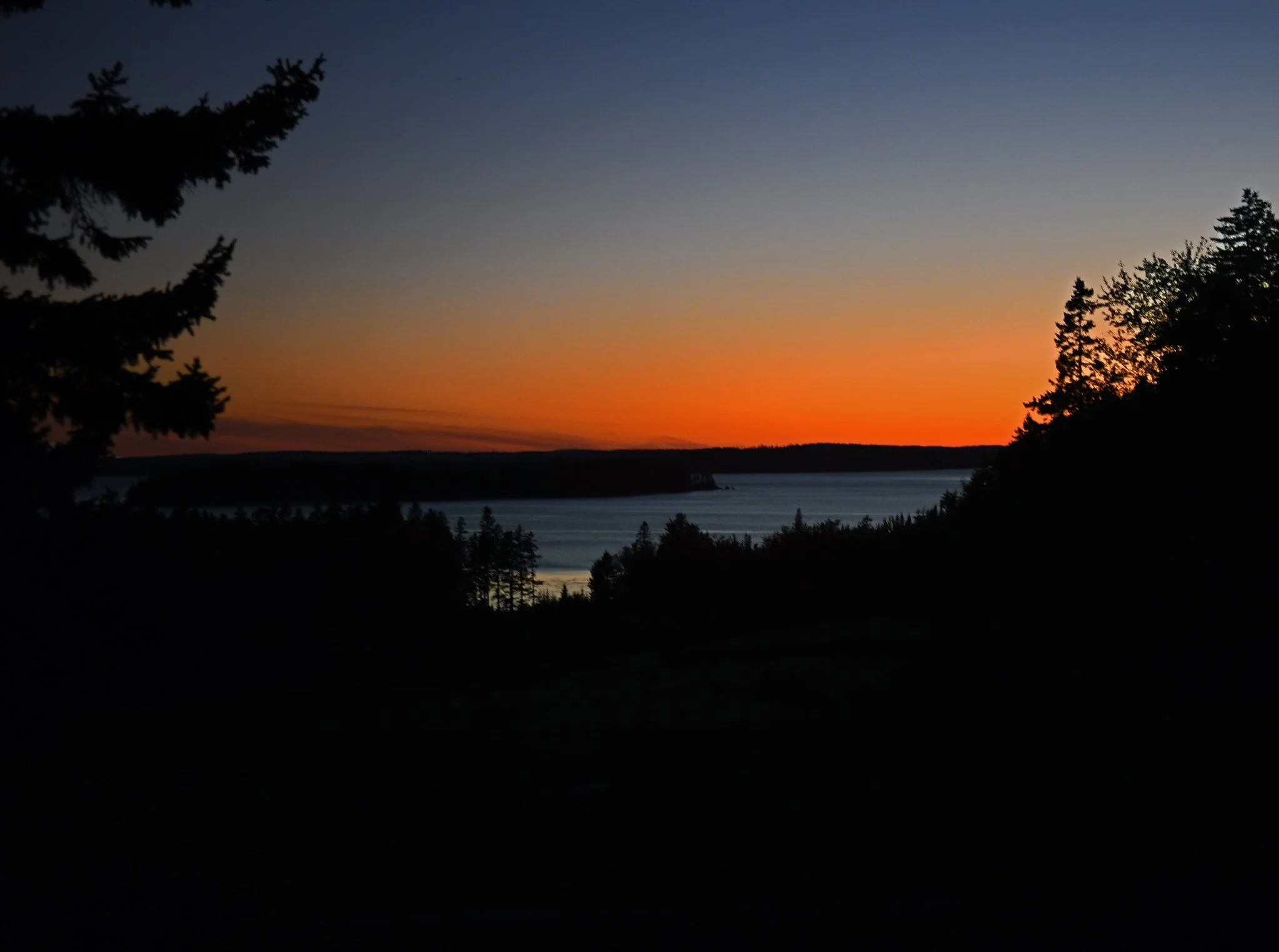The most important news about this September is that it did not relieve Maine from severe and even extreme drought. It was a crisp, beautiful, exhilarating month, yes. But dangerously so. Maine is the most forested state and much of it is experiencing fire hazard conditions. Here’s the latest official map:
But, enough of this gloom! You’re expecting some September beauty and you’re going to get a lot — maybe too much — of it in the following Postcards, which show that “We’re (Still) Having a Wonderful Time and Wish You Were Here.”
As usual, we start with the iconic views of the four Down East scenes that we monitor for you each month: The view from Brooklin’s Amen Ridge of Mount Desert Island, Maine’s largest island; the “Harbor Island House” overlooking Brooklin’s Naskeag Harbor; the old red boat house in Blue Hill’s Conary Cove, and Blue Hill, the near-mountain itself, as viewed across Blue Hill Bay:
Despite the dryness, walking through the dappled light and balsam scent of a mixed-wood forest on a crisp September day still can be sanity-saving. The slow rhythms of song birds were replaced by the percussion of hairy and piliated woodpeckers and the constant complainting of red squirrels.
Our ponds were lower and our streams were slower, but they retained their vibrancy. The painted turtles, beavers and dragonflies didn’t seem to be concerned about the loss of water, which may be a good sign:
As for the flora of September here, the standout trees were the centurian apple trees that still bear tempting fruit on almost leafless branches; the plum trees with indescribably deep red leaves; mountain ashes, some with red and some with orange berries; sugar maples starting to show fall colors, and fruited crabaple trees:
For bushes and ferns, the eye-catching prizes go to the viburnum leaves and berries; beach rose flowers and their hips, and cinnamon ferns, all of which became transformed in September:
The representative wildflowers of September included Queen Anne’s lace in its caged and galaxy forms; the many varieties of goldenrod, much of which became “grayrod” by the end of the month; asters that didn’t care where they called home, and sea lavender in and out of water:
In the gardens, we saw the last of the tiger lilies, poppies, petunias, and clematis in September. But, gladiolas still were putting up a good fight at the end of the month and chrysanthemums and gourds were becoming available:
Our fallow fields were thick and full of the browns and whites of fall grasses, sedges, and wildflowers before our annual September mowing:
After the mowing, white-tailed deer found new hiding places among garden grasses and ferns; snowshoe hares gorged themselves on the shorter grass; monarch and white admiral butterflies and other pollinators patrolled the flowers along the uncut edges, and grasshoppers, fall crickets, and tiny field toads were exposed to marouding wild turkeys:
It’s worth highlighting the September caterpillars that turned themselves into this year’s “super generation” of stronger monarch butterflies. These miraculous, longer-living monarchs started their dangerous migration from Maine to Mexico in September. We wish them a safe trip.
Another vulnerable species is the great blue heron, which usually migrates south, but increasingly has been overwintering here as our years get warmer:
Sometimes its easy to forget the beauty and importance of our resident birds, especially our many herring and ring-billed seagulls. They’re among nature’s toughest species and best flyers, not to mention their having a fancy for harmful European green crabs that hide in the rockweed:
The September coast is visited by other, larger migrators in the summer and fall. They come in the form of classic windjammers that sometimes gather together for a rendez-vous, but usually take tourists on special, multi-night coastal cruises. Here are some that visited Brooklin’s Great Cove in September:
American Eagle
Angelique:
Grace Bailey
Heritage and J.&E. Riggin:
Stephan Taber
Lewis R. French and Ladona:
On the working waterfront, the fishermen and their vessels in Naskeag Harbor seem to have been very busy tending lobster traps in September. When the fishing vessels return to their moorings, they complete the picturesque scene.
Up the coast a mile or so, we have another picturesque harbor that was busy in September. It’s Center Harbor, the port for many recreational boats and the home of the renowned Brooklin Boat Yard:
Between Naskeag Harbor and Center Harbor there lies Great Cove, where the also-renowned WoodenBoat Publications headquarters and WoodenBoat School are located. The Cove is very busy all summer. The School ends its boatbuilding and other classes in September. Sailing classes end early in the month, but faculty can take out a boat for a sundown sail after work. By the end of the month, though, all boats usually have been brought ashore, cleaned, and stored for the winter.
Finally, we look to the sky. The September moon, which often is called the Corn Moon or Corn Harvest Moon when full, was spectacular almost all month, perhaps due to the month’s relatively dry and cool, clearer air.
The cleaner atmospheric conditions and our changing views of the sun in September combine to start the colder months’ “sundown afterglow season.” That’s when we begin to see increasingly spectacular sights of coastal waters, such as Great Cove:
(All photographs in this post were taken in Down East Maine during September 2025.)

